The deck I’m about to talk about — Flamespeaker Jund – isn’t the best deck in Modern.
It is, however, a very good deck.
And it might, however, be the best deck for you to play.
It certainly was for me.
Creatures (16)
Planeswalkers (2)
Lands (24)
Spells (18)

I piloted this list to a Top 8 finish at a PTQ this past weekend in Berlin, CT, and feel like it’s an excellent choice for the format. In fact, to understand not just this deck, but why you’d play this deck, you have to understand a few things about Modern. In developing this understanding I’m greatly indebted to Craig Wescoe, Jake Van Lunen, and Jackie Lee for our conversations about the format, and (obviously) to Paulo Vitor Damo da Rosa and “osmanozguney” for the initial designs that led to this list. I also want to again highlight that this isn’t a situation similar to the one with Grixis Delver, where I genuinely felt as though I had broken it. This is a good deck that plays into certain strengths and certain pressure points of the format. If those strengths and pressure points are things you’re receptive to, you should think about evolving, working on, and ultimately playing this list.
Modern: Irreducible Complexity
As I’ve expounded upon endlessly by now, I left Wizards nearly two years ago to help build a national education initiative called The Future Project, which abysses pretty much all of my time. This has rendered my skills at Magic a shadow of their former selves. In my prime I considered myself an exceptional Constructed deckbuilder, a good Constructed player, a middling drafter, and a poor Limited player. I was excellent at figuring out the ‘pillars’ of a format, evaluating their strengths and weaknesses, and attacking from an angle that exploited their major deficiencies. Without the time to immerse myself in a format that deeply, however, I was unable to play into my biggest strengths.
I mention all of this because I think lots of people will similar skillsets find themselves frustrated by Modern — even with ample time and energy on their hands — because you simply cannot do this. Everything in Modern is possible, and any given tournament contains the majority of those possibilities somewhere within the field. Unless you’re Patrick Dickmann, you will encounter situations within the tournament that you have not anticipated. You will play against decks against which you have not meaningfully playtested — because even if you’ve jammed ten-game sets against a given archetype, one of the Kiki Pod lists will contain a maindeck Magus of the Moon, or one of the Junk Pod lists will maindeck four copies of Voice of Resurgence, or one of the Affinity decks will maindeck Spellskites to protect its four copies of Master of Etherium, or whatever, and this will require you to re-evaluate your previous experiences.
My point isn’t that you shouldn’t playtest or that everything is equivalently good. My point is that the format is of sufficient complexity that a lot of different people are going to come to a lot of different conclusions, most of those conclusions aren’t going to be nonsense, and you’re not going to be able to anticipate them all.
In circumstances like these, my assertion is that two key variables are very important:
- You need to equip yourself with as much information as possible within a given game, so that you can focus on optimizing toward a given game-state that you do know rather than having to evaluate the weight of a nearly-infinite number of possibilities that you don’t. This is exacerbated by the tremendous card selection available in Modern, particularly to Snapcaster Mage decks or decks with Chord of Calling and Birthing Pod… and in practice, this means that you want to be playing cards like Gitaxian Probe, Vendillion Clique, Inquisition of Kozilek, or Thoughtseize so that you can be aware of what is and is not happening within a given game. Conversely, cards like Courser of Kruphix — while very powerful — come with a downside that’s more meaningful than it otherwise would be.
- You need to play a deck that allows you to make decisions based upon heuristics — sets of rules that generally apply in most cases — rather than forcing yourself to rote-process the totality of information before you at all times. Mental energy is a finite resource, and research by people like Gerd Gigerenzer has repeatedly concluded that when optimizing for systems of sufficient complexity, there are higher costs involved in attempting to exactly calculate a decision — and doing so incorrectly — than there are to inexactly estimating a decision and doing so correctly.
Basically, this means you need to figure out a rule that mostly points in the right direction — a plan, if you will — and enact that rule as much as possible. This is because a plan is more conducive to problem-solving than random action, and when you’re processing bad information (or badly processing good information) you’re effectively taking random action. And practically speaking, this means that decks like Tron or UWR control (survive, srsly); Burn or Infect (kill them, srsly); or Jund (grind them, srsly) are effective along this axis.
I would say that the best decks in Modern are Angel Pod and Tempo Twin (UR or URG), and neither really fit these descriptions. This is because these conditions all pertain to the player rather than the deck, and setting the player rather than the deck up for success. The more experience you have with one of these two best decks, the less the aforementioned observations pertaining to systems psychology apply to you.
Why Flamespeaker Jund
At the beginning of this PTQ season, I was on a variant of Shaun McLaren’s UWR Kiki Control deck which I played to a 6-2-1 finish in Philadelphia a couple weeks back:
Creatures (14)
Lands (26)
Spells (20)

I liked that deck because it played a lot of cantrips, did inherently powerful things, generated free wins off the combo, and was fairly fundamentally sound. However, I had several big issues with it — very few of which pertained to the deck itself (although I don’t think spending most of your time answering threats is really where you want to be in Modern right now). Rather, I found that it wasn’t playing into my strengths, and crucially that the deck wasn’t equipping me with the ability to learn from my poor decisions.
A key trait of URW Kiki is that — like Faeries circa 2008 — you have to know when to shift your ‘moments’ and go from controlling the game to being the aggressor. What’s even trickier is that this momentum can shift back and forth several times not just within the same game, but within the same turn. You flash in an Angel after Remanding a spell — okay, you’re attacking. Your Angel takes a Path and you draw a Cryptic Command — okay, you’re controlling again. You Cryptic something and draw a blank, but you Clique their biggest threat out of their hand — aggressive firmly now. But you Cliqued them into a Kitchen Finks, and your only removal is Lightning Bolt, and they have a Gavony Township. Controlling again. And so it goes.
This was too cognitively demanding to me to sustain over eleven or twelve rounds of Magic, because this kind of momentum shift was hardly the only thing you had to think about in a given game. Moreover, even with two Cliques I almost never got information about my opponent’s hand (and I did most of my testing on Magic Online), it was challenging to realize when big decision points were happening, or what the outcome of different strategic angles might have been, or what I should be playing around versus what I should just bite the bullet and play right into.
After taking that loss, I experimented with a bunch of different decks but nothing was really speaking to me. I wanted to be proactive and I wanted to play with powerful individual cards, but I didn’t want to be hated out by powerful linear answers and I wanted a great deal of versatility in sideboarding, which is where I feel I get my biggest edges over PTQ-level opponents. The first deck I tried out that really spoke to me was Craig Wescoe’s PTQ Top 8 Orzhov Midrange list, which I affectionately dubbed “BW Gas:”
Creatures (17)
Lands (25)
Spells (18)
Sideboard

I liked what this deck was doing overall — proactive, information-intensive, consistent, aggressive — and think it’s another piece of evidence that Wescoe is a criminally underrated deckbuilder, but I disliked it for three key reasons:
- The card power felt super-low, especially when taking into account the sideboard;
- The mana was atrocious and required you to take about a million damage in a Thoughtseize/Bob deck without Lightning Bolts or lifegain;
- The only card selection was Dark Confidant, and option-conducive card advantage in Modern (i.e. raw cards from your deck) is super-important in a format with this diverse an array of threats and answers.
So I knew I wanted to find a deck that was doing basically what this one was doing, but that remedied those critical issues.
Flamespeaker Jund: The Strengths and Weaknesses
I knew very badly that I wanted to be Thoughtseizing and Inquisition-ing people. The second I cast one of those spells, we’d stop being on a level information playing-field and I could use my solid knowledge of the format’s fundamentals plus my game-designer-honed theoretical understanding of Constructed Magic to make good strategic decisions about what to take.
I also knew that I wanted to follow up one of those spells with a game-changing threat. Given seven-card hands of Modern exhibit high degrees of variation. Some are very threat-heavy, with multiple redundancies across the curve. In those cases, you’re not going to be able to take a card that’s going to allow you to prolong the game by a meaningful amount of time. Oftentimes, though, hands like that will contain something like a single Lightning Bolt or Remand that, if you remove it, will allow you to force something powerful through uncontested. This is why Flamespeaker is such an appealing card to me, because it really is challenging to lose the game after connecting with it even a single time — and Tarmogoyf, Dark Confidant, and Scavenging Ooze all self-evidently fit the bill by this point. Additionally, the basic plan of turn-one Disruption into threats on turns two and three followed by Disruption/Removal on turns four and five leading to a turn-six or turn-seven dead opponent was a straightforward-enough, proactive-enough roadmap for the game that I felt I could adapt flexibly to variations within that overall framework.
Finally, I wanted a solid, fundamentally-sound manabase that featured a number of different ways of mitigating both mana-screw and mana-flood without dealing me a million points of damage. Specifically, I knew I wanted to play a deck with the Mirrodin cycle of multicolor lands — cards that gave you the mana you wanted early enough for it to matter without forcing you to take tons of damage in order to get there. I knew aggressive decks were on the downswing, but I felt that anything I would be doing would be powerful enough to content with what was there so long as I didn’t end up killing myself by taking too much damage from my lands. This was also why cards like Courser of Kruphix — while powerful — were less important, because they filled roles I felt I could accommodate in other ways.
It’s this pattern of thought that led me to Flamespeaker Jund. I scoured lists online and picked one that resonated with me, then tailored it from there based on what I was experiencing in my matches. The deck does of course have its weaknesses. Nothing you can do prevents your opponent from topdecking threats, and if those threats are of sufficient caliber to trump your removal spells they are going to beat you. On the flip side of that, you rely upon both drawing and sticking one of your few game-ending threats. If your opponent draws enough removal to mitigate those threats — say you Inquisition a Bolt but they have a second Bolt plus a Path for your Bob and then your Flamespeaker — you’re relying upon drawing your threats and/or Raging Ravines before they draw theirs, and you’re at the point in the game where you have a bunch of three-mana cards in your deck (as well as a bunch of blank discard spells) while your opponent likely has a bunch of fours and fives, all live. There’s not a whole lot you can do about this; you can add a Planeswalker in the four-slot here or there, add or shave a discard spell, but strategically this is always going to be a reality to one degree or another.
The Deck
I want to point out a few of those specific choices that vary mine from other lists, and walk through how I arrived at those decisions.
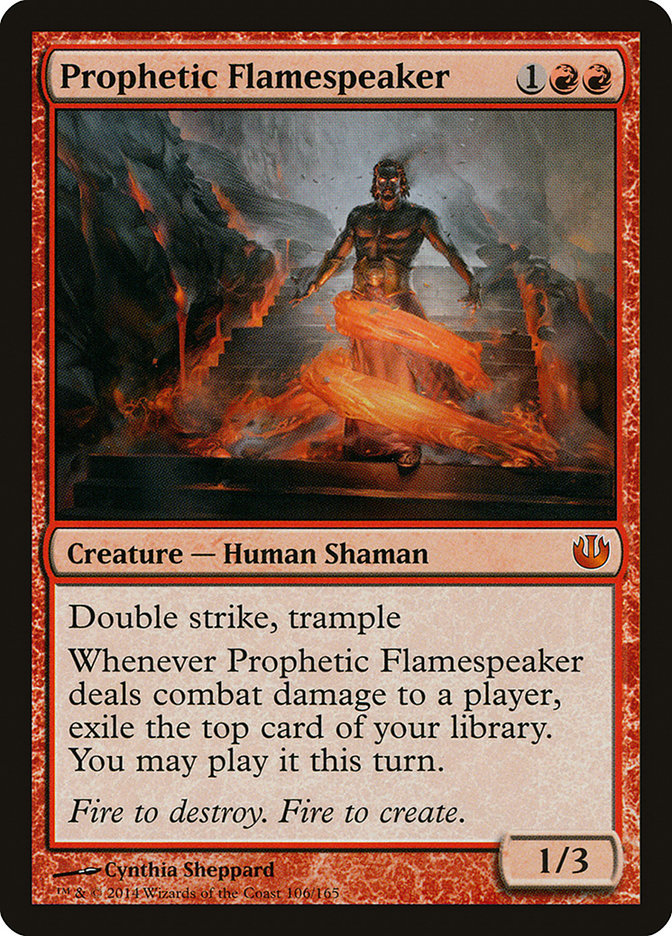
Once you arrive at Blackcleave Cliffs, you realize you really don’t want that much double-green in your deck. Moreover, once you realize you’re essentially a ‘fish’ deck that combines early disruption with the need to establish a game-ending clock, you realize that you want your creatures to put games away crazy-fast. Flamespeaker doesn’t outright kill them, but one hit is usually all you need to get way ahead, and two hits is almost always insurmountable. The fact that you can make it bigger in one of several ways (which I’ll get to in a second) means that in some cases it can just straight-up end the game outright. Also, it’s totally awesome with Lightning Bolt.
One thing about Flamespeaker: you can’t get too caught up on the fact that it ‘dies to everything.’ Once you’re playing Bob, you’re buying into the idea that you have some vulnerable threats whose power level is too great to pass up. Speaker getting Bolted is definitely worse than Bob getting Bolted, but conversely the presence of Bob means that your Speakers are more likely to live.
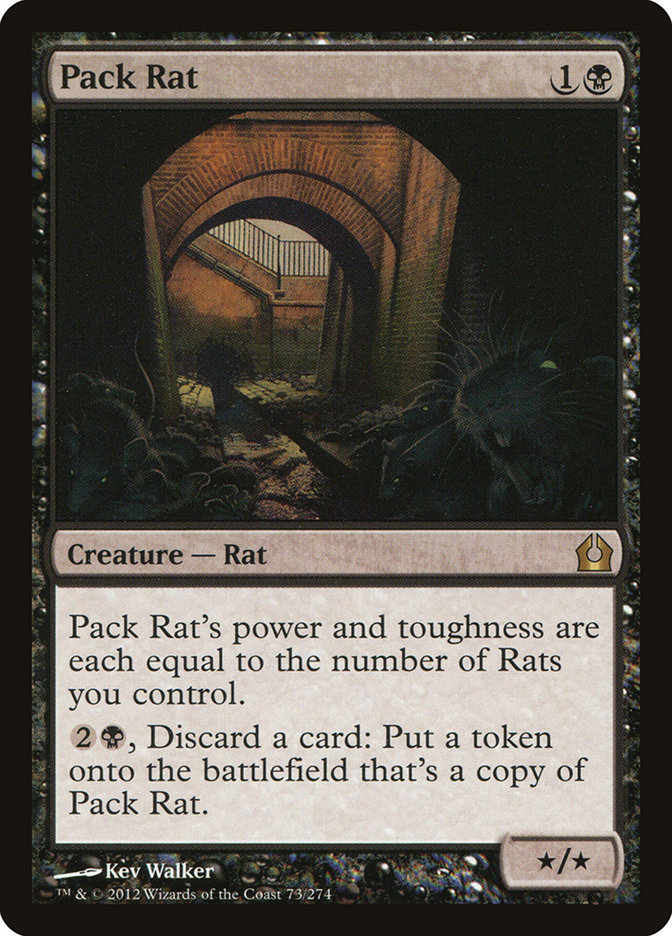
This came directly from Wescoe’s list. Pack Rat in Modern is nothing like Pack Rat in Standard — only very, very rarely are you going to run one out there on the second turn and ride it to victory. Instead, in this deck you rely upon Pack Rat to close windows that your disruption and removal open up — and to mitigate the mid-to-late-game flood that can happen from a glut of lands, redundant removal, or now-useless discard. I’ll only play Pack Rat without three mana open if I want it to die or if I know my opponent can’t kill it; usually, you want to play it as a five-mana spell. Cast it, make a rat, attack and make two more rats, then end the game the following turn.
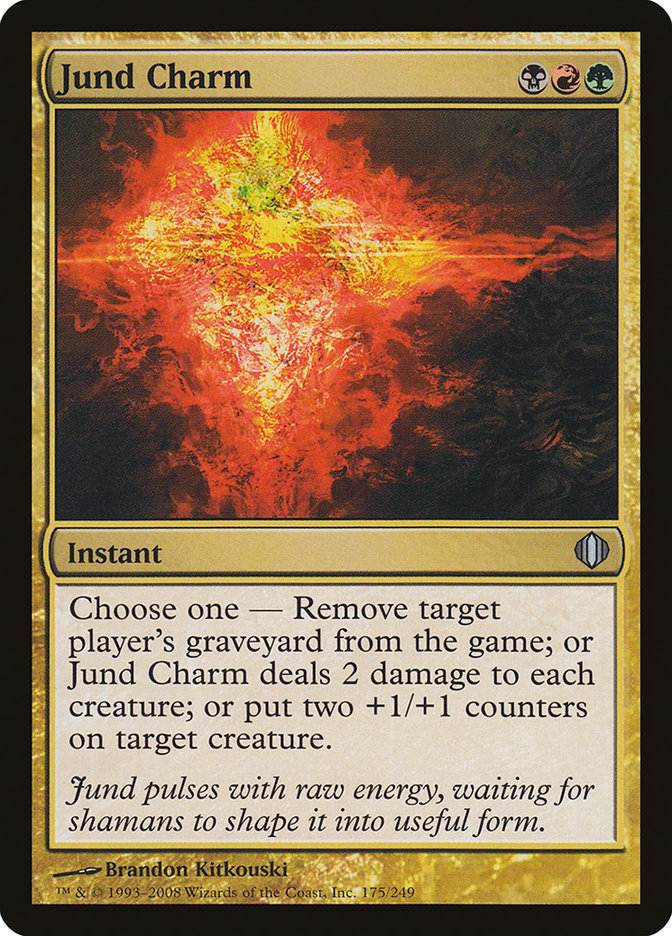
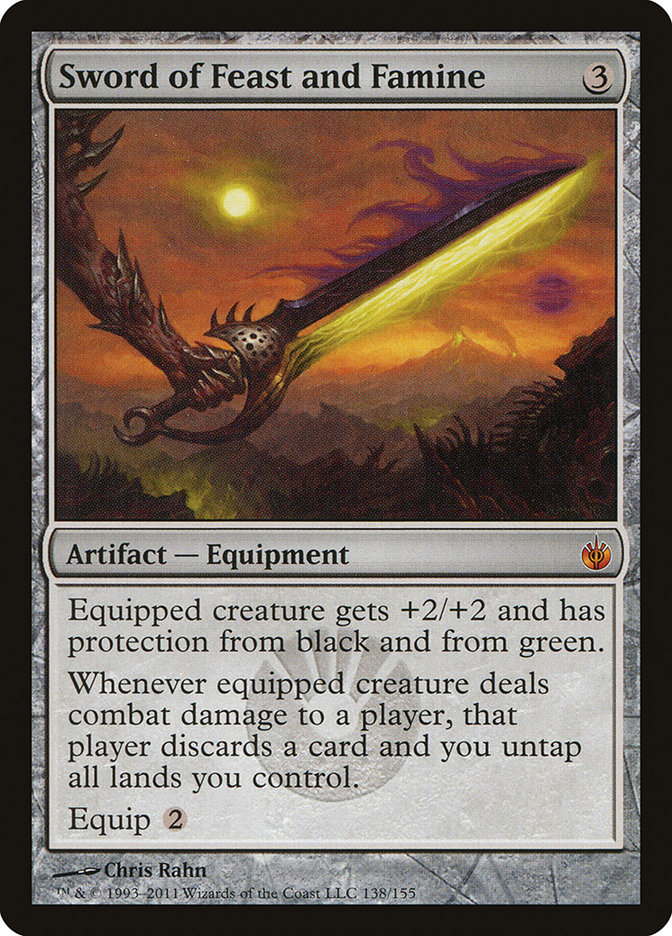
Neither of these cards are that outstanding, but you want some ways of making your Speakers bigger and you want a few pre-sideboarded cards. Jund Charm is nice because it offers a wide variety of interaction at a not-so-great rate — but Modern to me is about making sure your deck is packed with a critical mass of productive interactions in post-sideboarded games against as many archetypes as possible. Jund Charm is nice because it fulfills that goal while being a serviceable maindeck card. Sword, by contrast, is awesome in most game-ones but becomes quite bad after sideboard as people become more prepared for you (to give you an idea, I sideboard it out against B/G Rock because you’re winning the game anyway if any of your creatures survive).

This card is so, so much worse than it used to be — which is to say that instead of being one of the best cards in the format, it’s merely a vital and important role-player that will win you a nonzero number of games by itself. The real reason you care about Liliana, though, is that you want four “Murder” in your deck but you don’t want four cards that are dead if your opponent has no creatures. Just remember that the +1 is synergistic, and it’s not necessarily true that it’s hurting your opponent more than it’s hurting you.
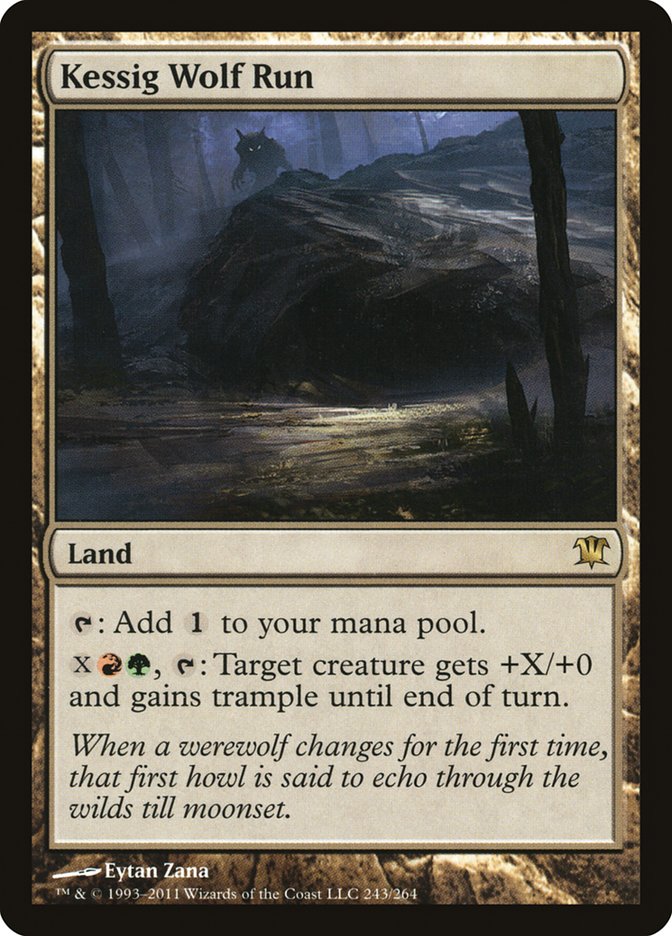
The primary Wolf Run mode is “RG, T: Target creature gains trample until end of turn”, which mitigates the ability of things like Lingering Souls tokens or Ornithopters to chump block you and race. Occasionally you go crazy on Flamespeaker, which is actually very relevant – you do want to make sure your deck can get to the point where you can close out a game in which you’re ahead before something dumb happens like your own Bob getting you into Bolt range. There is a tension between holding lands for Pack Rat and playing them for Wolf Run, but usually I just play all my lands out except for one — you don’t want them in hand if you draw Liliana anyway.
The Sideboard
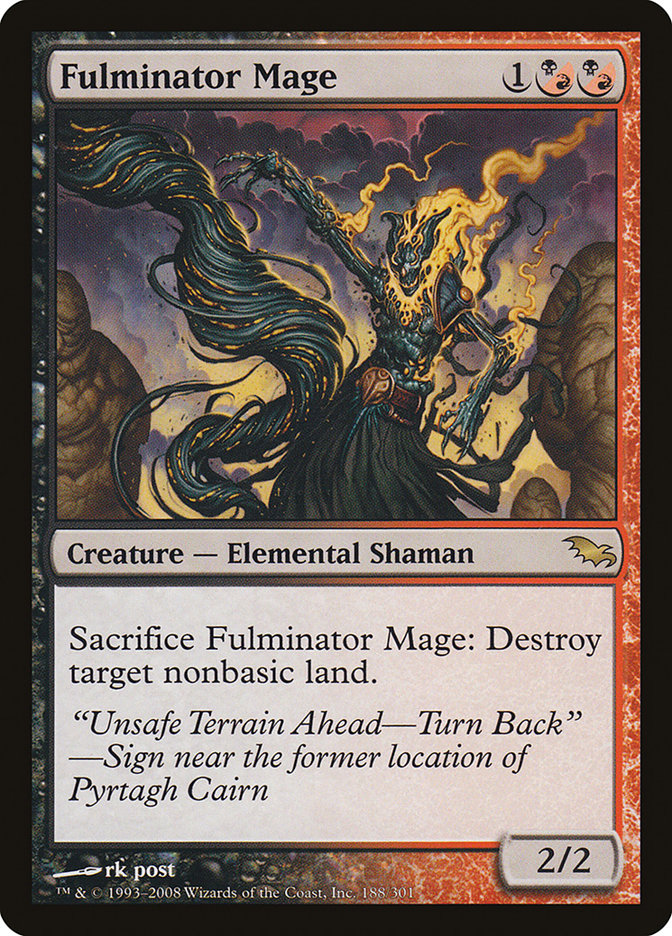
I trusted Osman’s list with the full four of these, and definitely find them very valuable — though I still get the inclination that you never want four of these, four Flamespeakers, and two Lilianas in the deck at the same tie. The key thing to realize is exactly why they’re way better than Stone Rains: you care about the two damage per turn, and you want them to sit on the table while you create key moments for them to generate maximum value.
Obviously, you’re going to just get people on turn three if you have a threat on the second turn or if you’re playing against Tron. But against a deck like U/W/R — where what you really care about is keeping them off Kiki or Cryptic and not-dying to Colonnade — you’re more than happy to attack for two a couple of times and then pull the trigger. A key moment at my PTQ involved firing off two Fulminators during my opponent’s first main phase so as to keep my opponent off triple-blue in combat, which prevented him from casting Cryptic Command on a critical Slaughter Pact I needed to kill a Restoration Angel and swing the tide in my favor. Basically, I’m bringing these in against control opponents or midrange opponents whom I know are going to try and kill every one of my creatures.
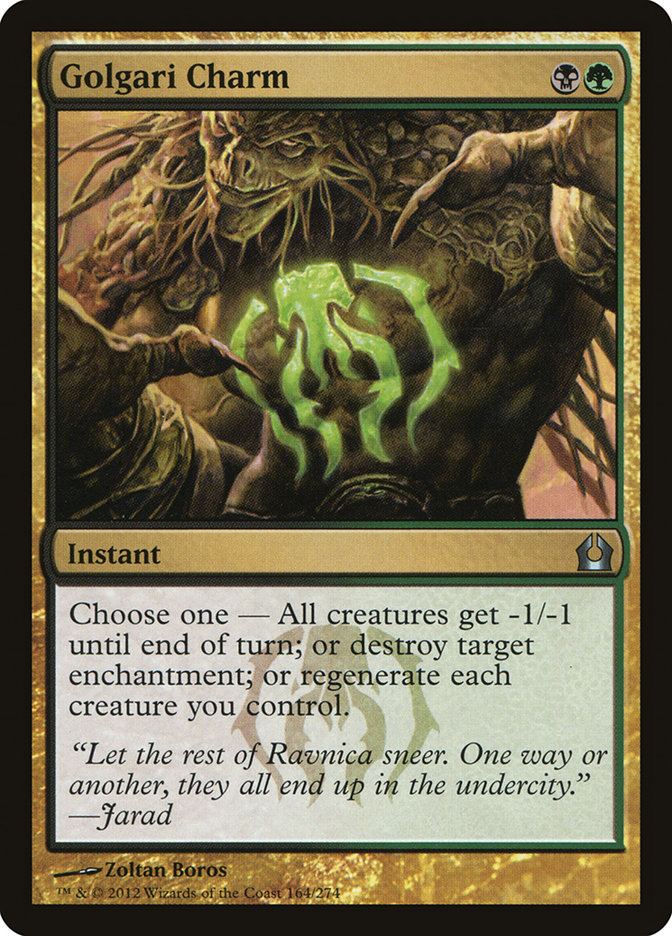
I’m not 100% confident about the second copy of this. You want Charm because it produces positive interactions in a wide variety of matchups, and as I said before your ultimate goal of sideboarding should be to have as few poorly-interacting cards as possible in your deck games two and three against as much of the format as possible.
The -1/-1 effect is very good against Affinity and Lingering Souls decks, and is also important against Pod on the draw. I also bring it in on the draw against Dark Confidant decks because of how important it is not to fall behind to that card.
The enchantment-destruction effect is important against Splinter Twin decks that actually keep Splinter Twin in post-board games; against Courser of Kruphix; against Pyromancer Ascension; against Bogles, obviously; and to a lesser extent against any big-time enchantment like Blood Moon or Bitterblossom that you’re going to see. The fact that both of these modes are as good as they are against two different features of Faeries and Bogles illustrates why versatility is actually very important in a format like Modern, and that is why I have two copies of this card despite it not being all that important against most of the format’s tier-one players.
The Regenerate effect you’re mostly using when the card is in for other reasons but you need to seize upon a critical moment – that happened to me when I brought in Charm to kill Splinter Twin but ended up regenerating my Dark Confidant against a Lightning Bolt.
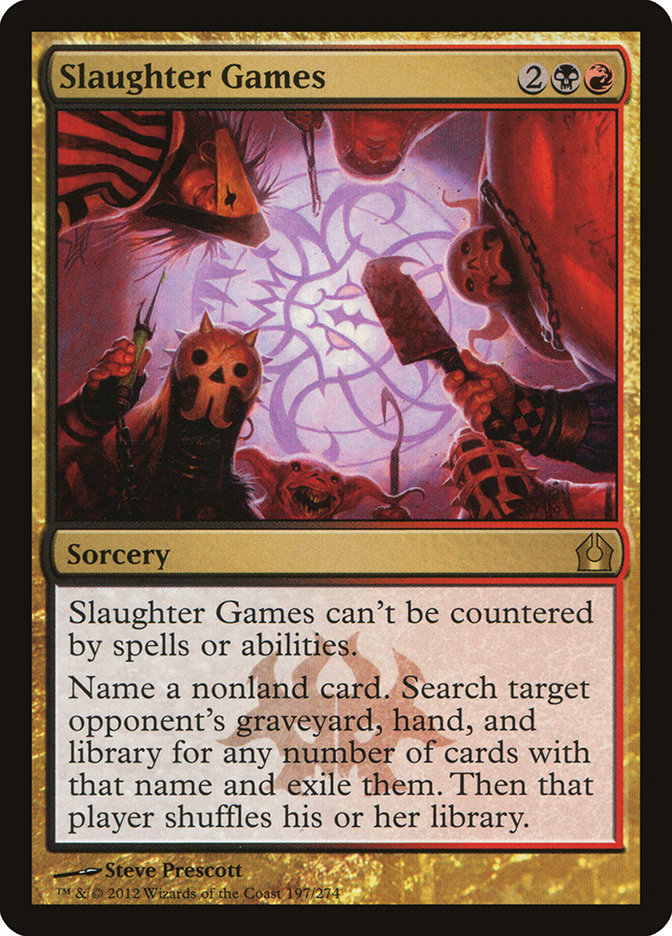
You want Slaughter Games against Scapeshift most of all, but it’s good against basically every blue deck or against combo decks that rely upon key cards like Through the Breach or Ad Nauseam. Relevantly, against blue, I play it mostly like a Coercion. Don’t forget you can hit important things in graveyards, like a Cryptic Command you badly don’t want them to be able to Snapcaster back — and that you always want to study their deck to get a sense of how they view the post-sideboard matchup.


These are my lifegain slots. I only wanted two because double-green can be a nightmare, and I wanted one of each because I also bring Courser in against midrange and control whereas Bow is also powerful against Affinity and against certain post-board configurations of Pod that can’t really kill your Flamespeakers but can block them.
It’s worth noting, by the way, that the reason I’m going through cards like this (and uttering statements like ‘certain post-board configurations of Pod’) is that a matchup guide is pointless because people’s decks look wildly different in games two and three depending upon the player and the strategy. Simple two-card changes (keeping in versus siding out Melira and Viscera Seer, for example) can totally change a matchup and cannot be predicted just by knowing the archetype. In Modern more than any other format, it’s important to meta-analyze how your opponents are playing and what they are deciding to prioritize so that you can gain information about how they’re configuring their deck post-board in pursuit of a particular strategic end.
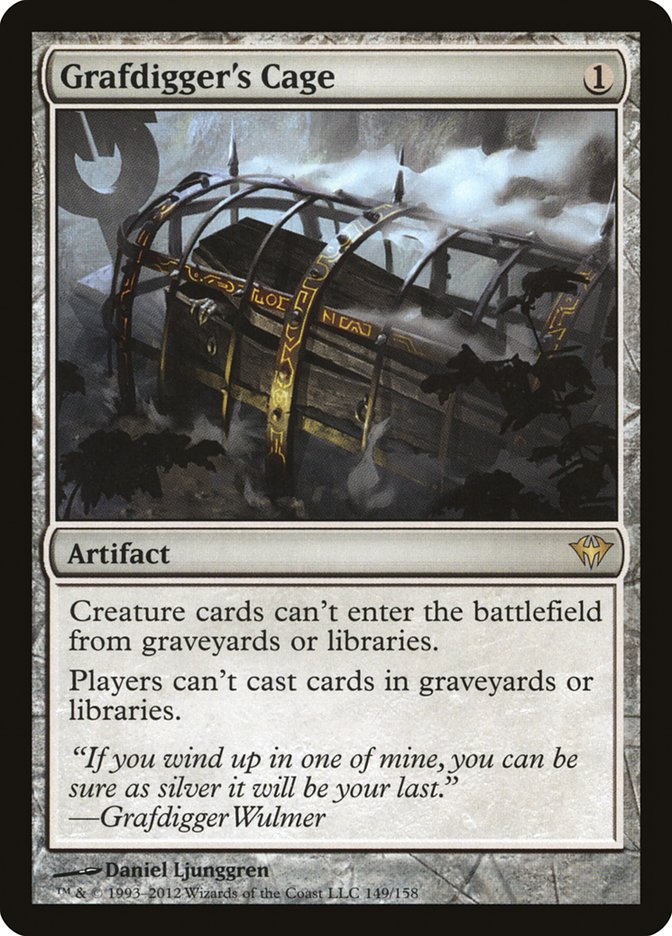
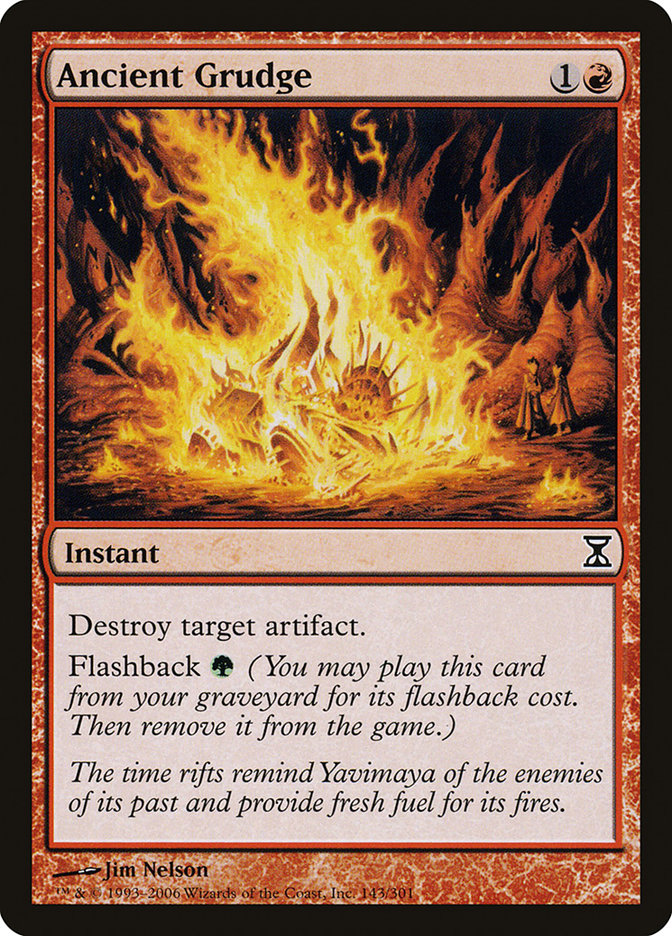
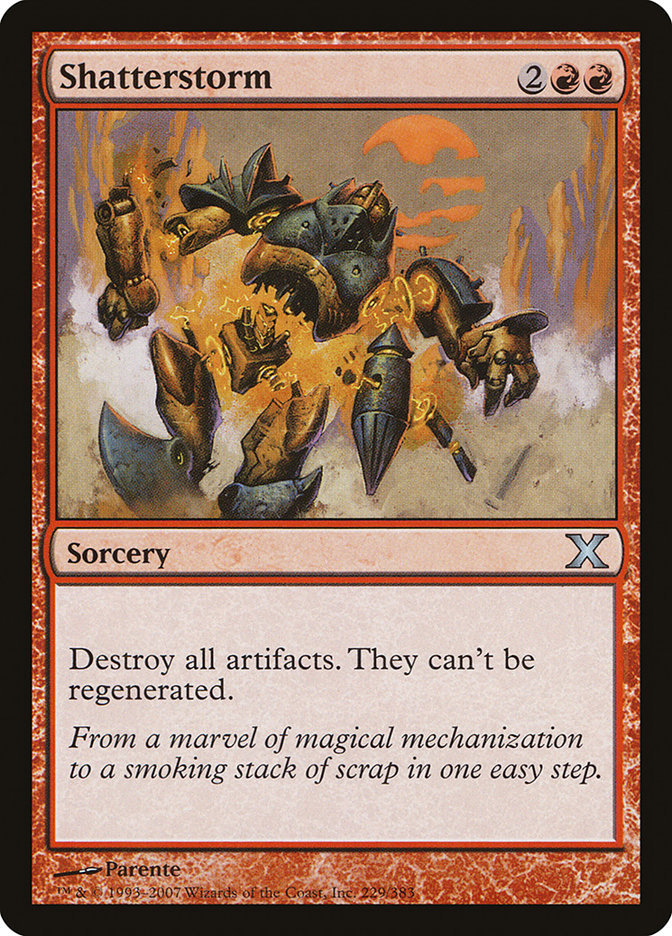
These are your matchup-specific answers. The split is such because you want two blowout effects versus Affinity, but you want one that can kill an Etched Champion and one that can kill an Inkmoth Nexus — while at the same time you want two answers to Birthing Pod, one that deals with Chord of Calling and one that deals with Spellskite. Relevantly, if I don’t see Spellskite and I don’t suspect Batterskull, I will leave out Grudge against Birthing Pod.
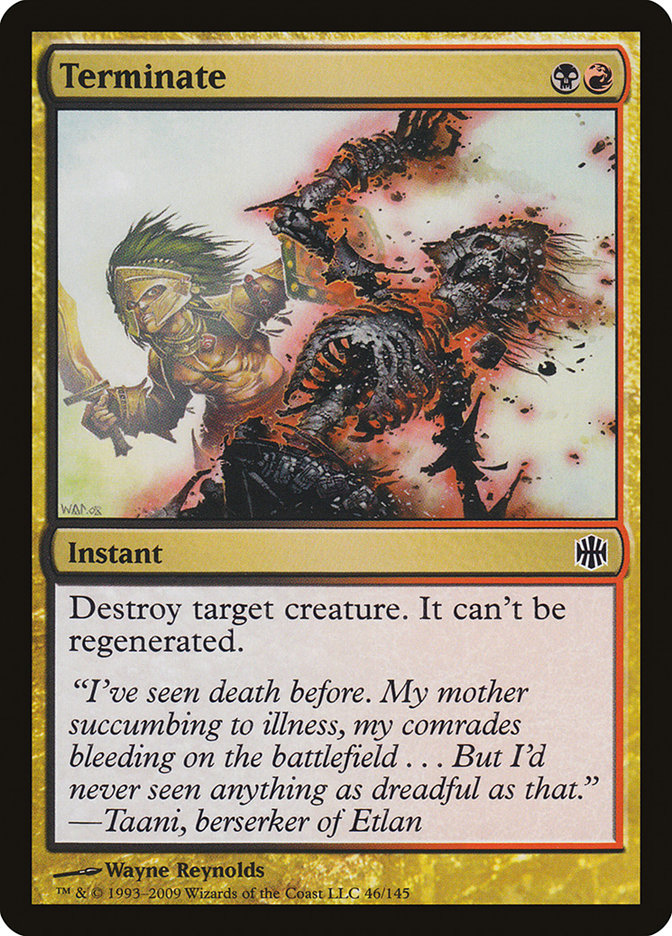
Against basically every creature deck you want another removal spell after board, and you also want to swap out Bolts and Abrupt Decays for things that kill Restoration Angels and Colonnades against UWR. The exception is against Value Pod decks, where you don’t have juicy targets like Kiki-Jiki and you really don’t want to be Terminating Eternal Witnesses, Kitchen Finks, and Voices of Resurgence.
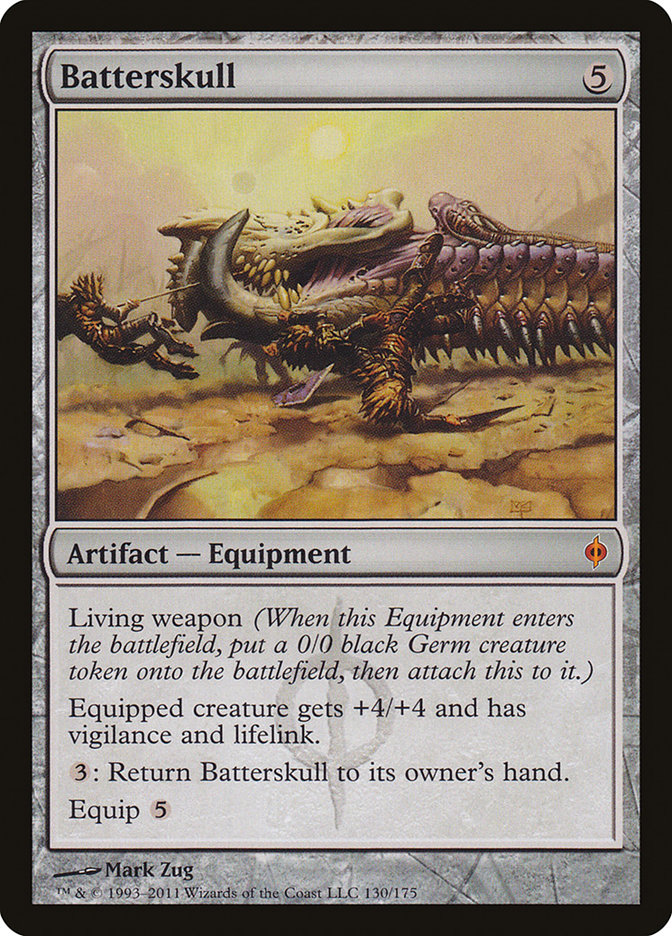
I bring this in against nearly every non-combo matchup for the same reason I sideboard out Sword. Sword is phenomenal in game-ones because people are going to be doing a whole host of medium-okay things, and Batterskull is bad because at five mana it’s highly unlikely to have an impact on anything relevant unless specifically you topdeck it to an empty board. After sideboarding, the game is likely to drag on much longer as both sides have more-efficient answers to the other side’s threats — meaning Batterskull will likely come online. The card gives you a degree of inevitability against answer-heavy decks like B/G, Jund, and UWR — and you also want it for the lifegain against burn and aggro.
Broadly speaking, you’re going to want to side out Thoughtseize and Confidant against burn decks, Bolts and Decays against control decks, Sword against decks that are trying to kill all your guys, Charm against decks it’s obviously bad against, Ooze against decks that don’t particularly leverage the graveyard and where card advantage is of critical importance, and Pack Rat against decks where you already possess inevitability. You can shave Flamespeakers when they are awkward on the mana in your post-board configuration, but even then I rarely like going below two. I almost never cut Tarmogoyf or Inquisition, though if somebody is super-paranoid and loading up on things like Rest in Peace or Leyline of Sanctity for some reason you can certainly entertain that option. Terminate, Pact, and Liliana almost always stay even as other removal leaves just because people may try to surprise you post-board with something (i.e. Obstinate Baloth), though I’ll take out Liliana against Lingering Souls.
The Path Forward
If I were to play this deck again, I’d strongly consider cutting Sword of Feast and Famine for another Pack Rat and replacing the second Golgari Charm in the sideboard with the fourth Thoughtseize. This enables you to maximize your total number of positive interactions in the early turns of post-board games while allowing you to consistently end games around turn seven or so while mitigating the variance of your draws. I’m also not entirely sure the fourth Fulminator Mage is where you want to be with zero Swords to turn them into hyper-relevant threats, so I could see either cutting a Scavenging Ooze for a second Kessig Wolf Run in the maindeck to alleviate that problem — and, from there, turning the fourth Fulminator into the first Brain Maggot for a flatter mana curve against combo and control (which also lets you curve nicely into a Flamespeaker).
Still, I’m most comfortable with the Sword and Charm cuts.
I think this deck is a great choice for at least the next few weeks of the Modern PTQ season, and it’s certainly my frontrunner for the Modern Grand Prix Boston-Worchester coming up in a month or so.
Finally, I want to thank the hundred-or-so people on Facebook who congratulated me this past weekend on my finish and asked about the deck. You inspired this article, and I hope it was useful at least to some degree. As is probably obvious from the trajectory of my life the last few years, I’m doing a lot of introspection to figure out what the proper role of Magic is for me, and how I can most constructively engage with the game I’ve loved for so long while acknowledging the wild amount of focus and attention it takes — now more than ever — to actually do well. I don’t have a good answer. But seeing those messages, hearing people’s curiosity, reminded me again that I have something at least potentially valuable to contribute, that my relevance to the strategic side of the game hasn’t entirely passed. That feels good. I miss it.
I wonder where it goes?
